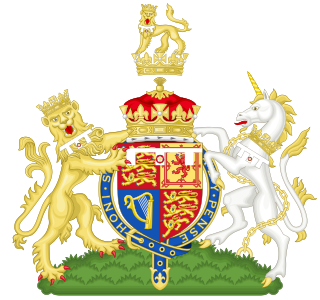
Duke of Edinburgh, named after the city of Edinburgh in Scotland, is a substantive title that has been created four times since 1726 for members of the British royal family. It does not include any territorial landholdings and does not produce any revenue for the title-holder.
Duke of Cumberland is a peerage title that was conferred upon junior members of the British royal family, named after the historic county of Cumberland.
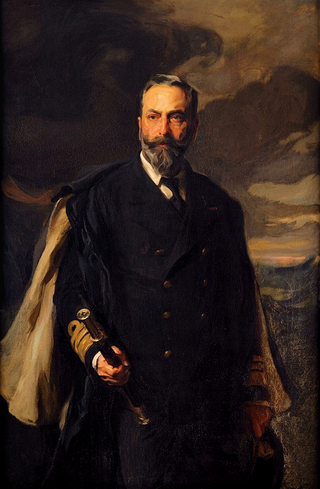
Louis Alexander Mountbatten, 1st Marquess of Milford Haven, formerly Prince Louis Alexander of Battenberg, was a British naval officer and German prince related by marriage to the British royal family.

Princess Helena Victoria of Schleswig-Holstein was a granddaughter of Queen Victoria of the United Kingdom. From 1917 her name was simply Princess Helena Victoria.

Julia, Princess of Battenberg, previously Countess Julia von Hauke and Countess of Battenberg, was the wife of Prince Alexander of Hesse and by Rhine, the third son of Louis II, Grand Duke of Hesse.
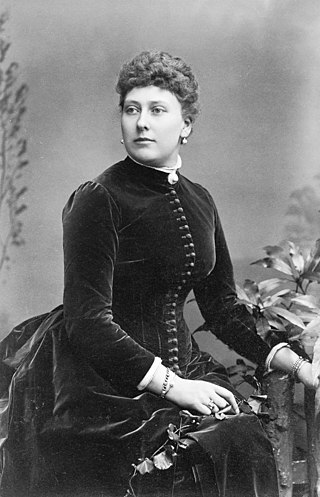
Princess Beatrice, later Princess Henry of Battenberg, was the fifth daughter and youngest child of Queen Victoria and Prince Albert. Beatrice was also the last of Queen Victoria's children to die, nearly 66 years after the first, her elder sister Alice.

Prince Henry of Battenberg, formerly Count Henry of Battenberg, was a morganatic descendant of the Grand Ducal House of Hesse. He became a member of the British royal family by marriage to Princess Beatrice of the United Kingdom, the youngest child of Queen Victoria. Through his daughter, Victoria Eugenie, who became the queen consort of Spain, Henry is a direct ancestor of the current Spanish royal family.
The Peerage of the United Kingdom is one of the five Peerages in the United Kingdom. It comprises most peerages created in the United Kingdom of Great Britain and Ireland after the Acts of Union in 1801, when it replaced the Peerage of Great Britain. New peers continued to be created in the Peerage of Ireland until 1898

Marquess of Milford Haven is a title in the Peerage of the United Kingdom.

Marquess of Cambridge was a title that was created twice, once in the Peerage of England and once in the Peerage of the United Kingdom.

The Mountbatten family is a British dynasty that originated as a British branch of the German princely Battenberg family. The name was adopted on 14 July 1917, three days before the British royal family changed its name from "Saxe-Coburg and Gotha" to "Windsor", by members of the Battenberg family residing in the United Kingdom, due to rising anti-German sentiment among the British public during World War I. The name is a direct Anglicisation of the German Battenberg, the name of a small town in Hesse. The titles of count and later prince of Battenberg had been granted in the mid-19th century to a morganatic branch of the House of Hesse-Darmstadt, itself a cadet branch of the House of Hesse.

The Battenberg family is a non-dynastic cadet branch of the House of Hesse-Darmstadt, which ruled the Grand Duchy of Hesse until 1918. The first member was Julia Hauke, whose brother-in-law Grand Duke Louis III of Hesse created her Countess of Battenberg in 1851, with the style of Illustrious Highness (H.Ill.H.), at the time of her morganatic marriage to Grand Duke Louis's brother Prince Alexander of Hesse and by Rhine. The name of the title refers to the town of Battenberg in Hesse. In 1858, the countess' title was elevated to Princess of Battenberg, with the style of Serene Highness (H.S.H.).

Captain George Louis Victor Henry Serge Mountbatten, 2nd Marquess of Milford Haven,, born Prince George of Battenberg, styled Earl of Medina between 1917 and 1921, was a Royal Navy officer and the elder son of Louis Mountbatten, 1st Marquess of Milford Haven, and Princess Victoria of Hesse and by Rhine.
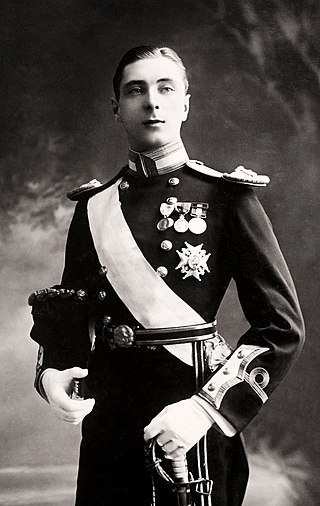
Alexander Albert Mountbatten, 1st Marquess of Carisbrooke, was a British Royal Navy officer, a member of the Hessian princely Battenberg family and the last surviving grandson of Queen Victoria.
The peerage title of Viscount Launceston, named for Launceston in Cornwall, has been twice created, each time for an individual connected with the British Royal Family.
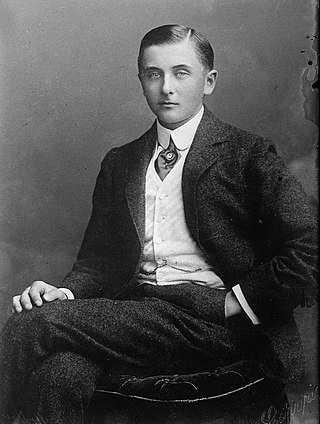
Lord Leopold Arthur Louis Mountbatten was a British Army officer and a descendant of the Hessian princely Battenberg family and the British royal family. A grandson of Queen Victoria, he was known as Prince Leopold of Battenberg from his birth until 1917, when the British royal family relinquished their German titles during World War I, and the Battenberg family changed their name to Mountbatten.

St Mildred's Church, Whippingham is the Church of England parish church of the village of Whippingham, Isle of Wight.

Marquess is a rank of nobility in the peerages of the United Kingdom.

Irene Frances Adza Mountbatten, Marchioness of Carisbrooke, was born in London, England, the daughter of William Francis Henry Denison, 2nd Earl of Londesborough, and Lady Grace Adelaide. She married Alexander Mountbatten, 1st Marquess of Carisbrooke, a female-line grandson of Queen Victoria.
Lady Iris Victoria Beatrice Grace Kemp was an English actress and model, and a member of the Battenberg/Mountbatten family. She was the youngest great-grandchild of Queen Victoria. She was also a niece of Queen Victoria Eugenie of Spain, making her a first cousin of Infante Juan, Count of Barcelona, father of Juan Carlos I and grandfather of current King Felipe VI of Spain, as well as Infante Jaime, Duke of Segovia, the Legitimist claimant to the French throne. She was also a second cousin of Prince Philip, Duke of Edinburgh, consort of Queen Elizabeth II.















